Table of contents
Tamarind, also called sour date or Indian date, is a 2-7 cm long legume of the tamarind tree ( Tamarindus indica). In cooking, the pulp is mainly used, which has a sweet and sour taste and can be eaten raw. Make sure it is organic quality.
Use in the kitchen
The tamarind pods (fruits) are bean-like, curved and domed with a light brown to grey-brown skin. When peeled, the raw flesh, which is reddish-brown to almost black when ripe, appears. This contains the dark brown seeds. 1 Almost all parts of the tamarind tree are used for very different purposes. In the kitchen, the flesh is mainly used as a seasoning (spice): tamarind paste made from it is used to season curries or chutneys, for example. In the countries where it is grown, the leaves are used as a vegetable or tea and the flowers as a vegetable, in soups or in salads. Are the tamarind seeds edible? The tamarind seeds in the flesh are also edible. Tamarinds can be roasted or mashed and then processed into a puree or powder.
What does tamarind taste like? Not all tamarind flesh has the same taste: in any case, it is sweet to sour, fruity and slightly tart. Reddish-brown or brownish flesh usually tastes sweet. The almost black one is more sour. However, the color also varies from region to region and sour-tasting tamarinds can also have brown pulp. A very sweet tamarind is the Thai variety "Makham Waan" and the American "Manila Sweet". 1 In contrast to the sour tamarind, the flesh of sweet specimens is often eaten fresh and straight from the pod. You can find more information on the difference between sweet and sour tamarind in the chapter Further information.
Can you replace tamarind? The sour taste of tamarind juice is reminiscent of lemon juice, which is why various cooking websites recommend replacing tamarind juice with lemon juice if necessary. However, since tamarinds have a very special taste, it is not easy to achieve this taste experience using alternative ingredients.
Can you eat tamarind raw? The flesh of the tamarind is edible raw, but it is often processed further. You should also not eat too much, as tamarinds have a slight laxative effect.
Tamarind fruits and their pods are also a component of tamarind concentrate and many processed products such as syrup and sauces, such as Worcestershire sauce, or serve as a basis for candies, jams and sorbets. In Mexico and Thailand, tamarinds are eaten as confectionery, candied and seasoned with chili.
Homemade preparation
How do you eat tamarind? There are various ways to eat tamarind. In Central Europe, you can mainly get tamarind puree, tamarind paste, tamarind juice or tamarind concentrate; the whole fruit is rarely found.
With raw tamarinds, you press the very thin skin a little and then carefully bite into the fruit, piece by piece. Be careful of the hard stones and eat around them, spit out the seeds and, if desired, process them further. If the skin is damaged, you should check the fruit for insect infestation and remove the affected areas. Small holes in the stones also indicate an insect infestation, because the invading animals often target the seeds.
The easiest way to get dried tamarinds is to soak them in hot water for about 15 minutes and then press them through a sieve. The resulting viscous liquid can then be used as desired. The pulp or paste is mixed with a little water and added as a seasoning to curry dishes, chutneys or drinks (lemonade).
Vegan rice recipe with tamarind
Ingredients (4 people): 300 g rice, 3 tbsp rapeseed oil, 30 g tamarind paste (organic), 2 cm chopped ginger (approx. 21 g), 2 chopped chili peppers, ½ tsp mustard seeds, ½ tsp turmeric, 1 tsp salt, 10 curry leaves, 50 g roasted cashews (healthier: macadamia nuts or walnuts, unroasted).
Preparation: Cook the rice according to the instructions. Heat the oil in the pan and fry the chili, spices, ginger and tamarind paste. Then add the curry leaves, fry them and then remove them again. Add the mixture to the rice and sprinkle with the nuts.
Preparation of tamarind tea - Tamer Hindi
Ingredients (for 2 liters): 150 g tamarind pulp (if you use a tamarind paste, you will need a little less), 2 l water.
Preparation: To prepare the tea, pour two liters of boiling water over the pulp or paste. Allow the infusion to steep for at least an hour and then pour it through a sieve (you can do this several times so that there are no more pieces in the liquid). You can then sweeten and dilute the tea according to your taste. Tamarind tea is often used to stimulate digestion or to activate the bile.
Vegan recipes with tamarind can be found under the note: " Recipes that have the most of this ingredient ".
| Not only vegans or vegetarians should read this: Vegans often eat unhealthily. Avoidable nutritional errors. |
Purchasing - Storage
Only Coop 's online range has fresh tamarinds in its assortment all year round. Other major retailers such as Migros, Denner, Volg, Spar, Aldi, Lidl, Hofer, Rewe and Edeka generally do not stock fresh, raw tamarinds. This also applies to organic supermarkets such as Alnatura and Denn's Biomarkt. Better places to go are online shops or Asian markets, although fresh tamarinds are relatively rare there too. Dried tamarinds, pastes or sauces are more common, and are also available in organic quality and sometimes all year round. Tamarind paste (organic) usually consists only of tamarinds and water; conventional products can also contain salt, sugar and additives (e.g. sodium ascorbate, citric acid or sodium benzoate).
Tamarind pastes or sauces are often pasteurized for sale rather than raw. Tamarind products are usually vegan, gluten-free and lactose-free, but always read the ingredient label to be sure.
The availability of tamarinds varies depending on the size of the store, catchment area, etc. Our recorded food prices for the DA-CH countries can be found above under the ingredient image - and by clicking you can see their development at various suppliers.
Storage tips
Ripe, fresh tamarind can be kept for several months at room temperature. To keep the pods fresh for even longer, you can also store them in the freezer. The pulp and paste can be eaten opened in the refrigerator for several weeks. Dried tamarind has a shelf life of around 2 years. Tamarind should be stored in an airtight and light-proof place and checked regularly for pests.
Ingredients - Nutritional values - Calories
100 g of tamarinds provide 239 kcal of energy. This includes 62 g of carbohydrates (including 39 g of sugar), 2.8 g of protein and 0.6 g of fat. The sour taste of the tamarind is due to the tartaric acid present in the pulp (up to 20%). The pods consist of about 11% shell and fibers, 55% pulp and 34% seeds. The pulp contains about 31% water. 2 The water content depends on the degree of drying of the pulp.
Ripe tamarinds contain 0.43 mg of vitamin B1 per 100 g (39% of the daily requirement). This is comparable to the vitamin content of chickpeas (0.48 g/100g). Lentils have more vitamin B1 (0.87 g/100g). The vitamin plays a relevant role in energy metabolism and is important for the heart and nerves. Vitamin B1 deficiency mainly results in tiredness, memory problems and lack of appetite. 2
Potassium is also well represented at 628 mg/100g (31% of the daily requirement). The values are comparable to peeled hemp seeds or dates. White beans have a particularly high potassium content when raw at 1797 mg/100g, but when cooked it is reduced to 391 mg/100g. 2
100 g of tamarinds contain 2.8 mg of iron (20% of the daily requirement). This puts tamarinds ahead of peas (1.5 mg/100g), but far behind red lentils (7.4 mg/100g). Iron plays an important role in the human body in oxygen transport and energy metabolism. 2 An iron deficiency initially manifests itself in dry skin, brittle nails and brittle hair. Fatigue and weakness can develop later. 3,4
In addition to fruit acid, the pulp of tamarinds also contains invert sugar, pectins, pyrazines and thiazoles (fragrances) 10 and is rich in flavonoids and tannins. The seeds, on the other hand, contain considerable amounts of saponins. 5
The complete ingredients of tamarinds, the coverage of the daily requirement and comparison values with other ingredients can be found in our nutrient tables. In the article Nutrients explained you will get a detailed insight into the topic.
Effects on health
How healthy is tamarind? Tamarinds have long been considered medicinal plants. They are said to have countless positive effects in various areas of human health: they have an antioxidant effect, lower blood sugar levels and strengthen the immune system. They have a protective effect against kidney problems associated with hyperglycemia and are useful for cancer, cardiovascular disease, epilepsy, non-alcoholic fatty liver disease, arthritis, diabetes and inflammatory bowel disease. 6 The sour tamarind appears to have a stronger blood pressure lowering effect than the sweeter variety. 23 Tamarindus indica is used primarily for stomach pain, diarrhea and constipation, bacterial infections, parasitic infestations, for wound healing and for inflammation. They are also used as a dietary supplement for malnourished patients because T. indica is cheap and easily accessible. 7 In addition to the traditional uses mentioned above, tamarind is also said to help control the feeling of satiety and thus prevent obesity. Tamarindus indica can also help with colds and fever. 8
However, reliable human studies are often lacking for the effects mentioned. A 2022 review was able to demonstrate the clinical effectiveness of T. indica for joint pain, eye diseases, colds, arthritis, diarrhea, dysentery and dental problems, as well as anti-inflammatory properties, among the numerous folk medicinal uses. In addition to the pulp, the leaves, seeds and bark are also used. In the future, further studies are therefore needed to scientifically investigate additional effects known in ethnomedicine. 22
Dangers - Intolerances - Side effects
Intolerances and allergies can occur after consuming tamarind. Since the fruit and the paste made from it contain fructose and histamine, people with an intolerance to fructose or histamine should be careful. However, only small amounts of the paste are usually used, which is why it should generally be tolerable. 9
Since tamarinds have a mild laxative effect, they should not be consumed in excess. However, there are no known side effects, interactions or contraindications. 10
Use as a recognized medicinal plant
Johannes Actuarius (personal physician to the Greek emperor in Constantinople) wrote in the 13th century of a cooling laxative for gallbladder diseases. Since the 15th century, tamarinds and products made from them have been found in German pharmacies. 12 To date, tamarinds have not been monographed as a herbal medicinal product by ESCOP, HPMC or Commission E - despite their medicinal effectiveness as a mild laxative.
Folk medicine - natural medicine
In Africa, tamarinds are one of the traditional medicinal plants and are used in the countries from Senegal in the west, through Sudan to Ethiopia in the east and Mozambique and Madagascar in the south. In folk medicine, tamarind leaves are used for coughs and fevers, tamarind flowers for rheumatism, pain, inflammation, wounds and joint problems. 13 The leaves are also used as an anthelmintic due to their acidity. 12 The pulp of the pods is used raw as a laxative, for malaria, dysentery, rheumatism, hemorrhoids, snake bites, for wound healing, for flatulence, as an infusion for feverish illnesses, for gallbladder problems and as an antiscurvy remedy. 13
Ecological footprint - animal welfare
The CO 2 footprint is the primary way to assess the climate friendliness of a food. This depends on various factors. The type of agricultural production (conventional vs. organic), seasonal, regional or domestic production or import by truck, ship or plane, different types of packaging and whether the product is fresh or frozen all play a decisive role. 14 We have not yet found any information on the CO 2 footprint of fresh tamarinds. Tamarind paste is calculated at 0.61 kg CO 2 eq/kg, although this value varies slightly depending on the manufacturer. 15
Despite intensive research, we have not yet been able to determine the water footprint.
You can read detailed explanations of various sustainability indicators such as ecological footprint, CO2 footprint or water footprint here.
Animal protection - species protection
Tamarind trees represent an important habitat and an important source of food for numerous animal species. Insects benefit from the nectar-rich flowers, whereas ants, termites, monkeys and small mammals eat the fruit and antelopes and giraffes feed on the leaves. In addition, the dense crown offers protection and a sought-after shady spot. 13
Worldwide occurrence - cultivation
The origin of Tamarindus indica is still not fully understood. There are assumptions that the origin of wild tamarinds lies in Madagascar, South Africa or West Asia. Evidence suggests that it is naturally distributed in African savannas and rain-green dry woodland zones. Although T. indica thrives very well in semi-arid tropical lowlands, it also occurs in monsoon regions (without waterlogging) and at altitudes of up to 1500 m above sea level. 13
Tamarind trees are now grown commercially mainly in America, Africa and Asia. 16 The most important producing countries of tamarind products include India and Thailand, India produces about 0.3 million tonnes of tamarind fruit per year. 17
Found in the wild
Tamarind trees are native to Central Africa, but can also be found in Central America, Brazil and the West Indies. In Sudan, the entire harvest comes from wild tamarind trees, which are rarely cultivated. 13 The tree can also be found in other parts of Africa, either wild or protected. 18 The fruits of wild tamarind trees often have a rather sour taste. Cultivation has led to the development of sweeter varieties.
Season: In Central Europe, tamarind products can be found all year round, as the ripe fruits can hang on the tree for a very long time and are harvested at different times. The pods ripen in Florida, Central America and the West Indies from April to June and in Hawaii in late summer. 1
Cultivation - Harvest
To grow a tamarind tree yourself, you need a permeable, humus-rich substrate. Coconut substrate is particularly suitable for this. Later, you mix in more and more garden soil. A tamarind pod normally contains at least 4 seeds. The germination time of tamarind seeds is between 2 and 8 weeks, depending on the soil temperature. The seeds should be soaked in lukewarm water for a day. Then you plant and water them in a growing substrate. The pot can be placed in a warm, dark place. As soon as the first leaves sprout, the plant needs a bright place, but not too much sun. In addition, the soil must be sufficiently moist at the beginning, but not wet. 19
The tamarind is almost non-existent in typical tropical forests. Tamarindus indica is usually an evergreen tree, but can shed its leaves during the dry season in hot areas. Tamarind trees can reach an age of up to 200 years. 13
Once fully ripe, the fruit is left on the tree for up to 6 months so that the liquid content is reduced to about 20%. If you want to use the fruit immediately, the pods are removed directly from the stem. In India, there are special harvesting machines that shake the branches and let the ripe pods fall to the ground. The rest remain on the tree until they fall naturally. It is not allowed to knock the fruit off the tree with sticks, as this type of harvesting could damage the newly developing leaves and flowers. To keep tamarinds fresh (for sale), the skin of the tamarind pod must not be damaged during harvesting. 1
Further information
Tamarindus indica belongs to the legume family (Fabaceae or Leguminosae) and is one of the few cultivated species of the subfamily Caesalpinioideae. The name tamarind is derived from the Arabic "Tamar hindi", which means Indian date. 1 However, this is misleading, as T. indica does not originate in India. The fruits were eaten in Africa and India mainly in times of need and were used to make lemonade. The carob tree ( Ceratonia siliqua, carob tree, carob tree), the so-called "carob", which is mainly found in the Mediterranean region, also belongs to the above-mentioned subfamily. 20 See also the ingredient: Carob powder, raw (organic?).
Sweet tamarind trees produce significantly more pulp and larger seeds than sour trees. 24 Sour tamarinds, on the other hand, are the most common and account for 95% of total world production. Sweet tamarinds come mainly from Thailand. They are harvested when half-ripe and ripe. As a rule, sweeter specimens achieve a higher market price than sour tamarinds. 25
Possible confusion with the tamarind fruit ( Tamarindus indica) consists mainly of Garcinia cambogia (Malabar tamarind), whose fruit resembles a small pumpkin. 11
Alternative names
Sanskrit scriptures in Ayur Veda Susrutas describe the tamarind as Ambika, for example. 12 There are also Latin synonyms for Tamarindus indica : Tamarindus occidentalis Gaertn.; Tamarindus officinalis Hook. 1 Sometimes the literal translation Indian date (Indian dates) or sour date is also needed.
Spelling errors such as tamarind, tamarind, tomarinde, tarmarinde, taraminde, tanarinde, tamrinde, tamerinde, tamatinde, ramarinde are common. Outside Switzerland, it is also written as sweet tamarind. In English, the fruit is called tamarind, sour tamarind or sweet tamarind, the tree tamarind tree or Tamarindus indica. In Turkish, tamarind is called demirhindi, eating tamarind means: demirhindi yemek.
Other uses
The tamarind has many uses. In the West Indies, the raw pulp is used as a spice and also for dyeing and pickling tobacco. 12 In some regions, the leaves are also used as a dye for dyeing fabrics, as animal feed or for producing essential oils. 13,18 The tannins contained in the bark are used in some areas of Africa to tan hides and skins. The wood is used to make charcoal, wheels, mortars, agricultural tools, fences, furniture, etc. 13
The seeds are also used to make tamarind kernel powder, which is widely used in the paper, textile and jute industries. 21 They are also used to make polysaccharide (gelatin), glue and tannin. 18 The seeds are also a popular food supplement because they are high in protein. Tamarind kernel oil is also available on the market; a golden-yellow semi-dry oil that is similar to peanut oil but is mainly used as lamp oil. 13 In South India, tamarind flowers are also a good source of nectar for honey bees, which produces sweet and sour honey. 1
Bibliography - 25 Sources
| 1. | Morton J. Tamarind. In: Julia F. Morton, Hrsg. Fruits of warm climates. Miami, FL; 1987: 115-121. |
| 2. | USDA United States Department of Agriculture. |
| 3. | Verbraucherzentrale. Eisen: Qualität nicht Quantität ist die Frage. 2023. |
| 4. | Biesalski HK, Grimm P. Taschenatlas der Ernährung. Stuttgart und New York: Georg Thieme Verlag; 2004. |
| 5. | Rana M, Sharma P. Proximate and phytochemical screening of the seed and pulp of Tamarind indica. Journal of Medicinal Plants Studies. 2018;6(2):111–115. |
| 6. | Arshad MS, Imran M, Ahmed A, Sohaib M, Ullah A, Nisa M un, Hina G, Khalid Waseem, Rehana H. Tamarind: A diet‐based strategy against lifestyle maladies. Food Science & Nutrition. 2019;7(11):3378–3390. |
| 7. | Kuru P. Tamarindus indica and its health related effects. Asian Pacific Journal of Tropical Biomedicine. 2014;4(9):676–681. |
| 8. | Pereira Paes Menezes A, Cerini Trevisan SC, Barbalho SM, Landgraf Guiguer E. Tamarindus indica L. A plant with multiple medicinal purposes. Journal of Pharmacognosy and Phytochemistry. 2016;5(3):50–54. |
| 9. | Unvertraeglichkeitsladen de: Cosmoveda Tamarindenpaste Bio. |
| 10. | Bäumler S. Heilpflanzenpraxis Heute - Arzneipflanzenporträts (3. Auflage). Urban & Fischer: München; 2021. |
| 11. | Miraherba de: Tamarinde – Die Wirkung der indischen Dattel Tamarindus indica. 2018. |
| 12. | Heilpflanzenwelt de: Monographie Tamarindus. |
| 13. | Gebauer J. Ökophysiologie und Verwendungsmöglichkeiten der Wildobstarten Adansonia digitata und Tamarindus indica im Sudan. 2003. |
| 14. | Reinhardt G, Gärtner S, Wagner T. Ökologische Fussabdrücke von Lebensmitteln und Gerichten in Deutschland. IFEU Institut für Energie- und Umweltforschung Heidelberg. 2020:1–22. |
| 15. | Carbon cloud com: Tamarind paste. |
| 16. | Mansingh BB, Binoj JS, Sai NP, Hassan SA, Siengchin S, Sanjay MR, Liu YC. Sustainable development in utilization of Tamarindus indica L. and its by-products in industries: A review. Current Research in Green and Sustainable Chemistry. 2021;4:100207. |
| 17. | Shaikh Z, Mohd M, Paramdeep B, Maad K, Noorul H, Nesar A, Saba P. Medicinal uses & pharmacological activity of Tamarindus indica. World Journal of Pharmaceutical Sciences. 2017; 5(2):121–133. |
| 18. | El-Siddig K, Gunasena HPM, Prasad BA, Pushpakumara DKNG, Ramana KVR, Vijayanand P, Williams JT. Fruits for the Future 1 (Revised edition): Tamarind, Tamarindus indica L. Southampton, UK: Southampton Centre for Underutilised Crops; 2006. |
| 19. | Kübelpflanzeninfo de: Tamarinde. |
| 20. | Brücher H. Tropische Nutzpflanzen. Ursprung, Evolution und Domestikation. Berlin, Heidelberg, New York: Springer; 1977. |
| 21. | Kumar CS, Bhattacharya S. Tamarind seed: properties, processing and utilization. Critical Reviews in Food Science and Nutrition. 2008;48(1):1–20. |
| 22. | Maruga Raja M, Poonguzhali S, Rao BV, Choudhury A, Devarajan A. A scientific evidence-based review of tamarind usage in indian folklore medicine. JNR. 2022;347–362. |
| 23. | Akter T, Bulbul MdRH, Sama-ae I, Azadi MA, Nira KN, Al-Araby SQ, Deen JI, Rafi MdKJ, Saha S, Ezaj MdMA, Rahman MdA. Sour Tamarind Is More Antihypertensive than the Sweeter One, as Evidenced by In Vivo Biochemical Indexes, Ligand–Protein Interactions, Multitarget Interactions, and Molecular Dynamic Simulation. Nutrients. 2023;15(15):3402. |
| 24. | Chimsah FA, Nyarko G, Abubakari AH. A review of explored uses and study of nutritional potential of tamarind (Tamarindus indica L.) in Northern Ghana. African Journal of Food Science. 2020;14(9):285–294. |
| 25. | Yahia EM, Salih NKE. Tamarind (Tamarindus indica L.). In: Yahia EM, Hrsg. Postharvest Biology and Technology of Tropical and Subtropical Fruits. Volume 1: Fundamental Issues. Woodhead Publishing; 2011: 442–457. |

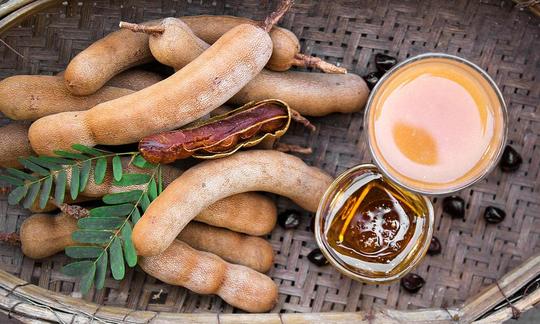

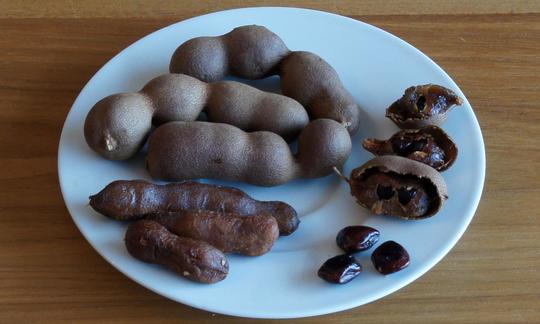

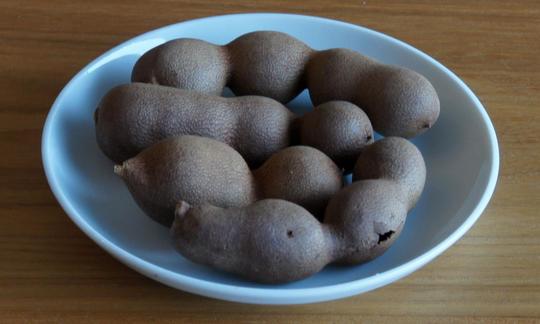

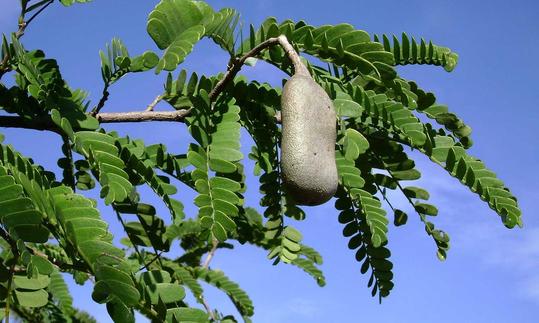

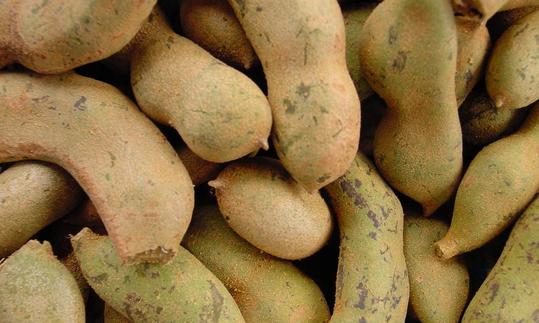

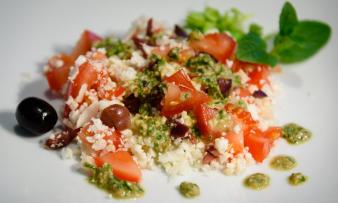

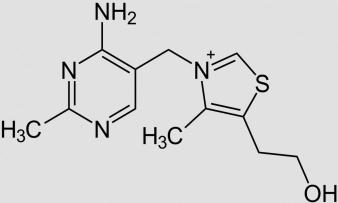




Comments